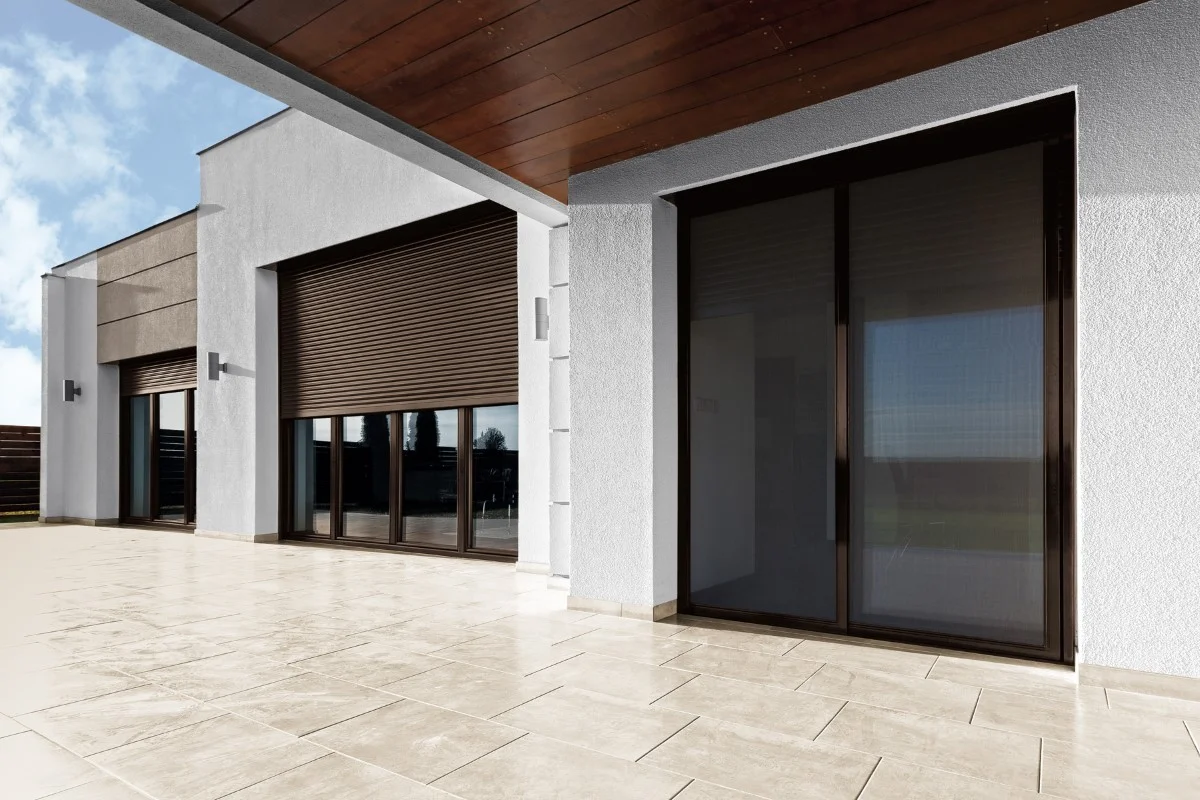Electrical installation for external roller shutters requires detailed planning and precise execution. To ensure the effective operation and safety of the roller shutter control system, it is necessary to follow certain rules and guidelines. In this article, we will discuss the key aspects of preparing the electrical installation under external roller shutters, paying attention to important details that are often overlooked, but have a significant impact on the functionality and safety of the entire system.
Translated with DeepL.com (free version)
WHAT MORE IN THE ARTICLE?

Installation Planning
Cable Selection
The installation should be carried out with wires of the same insulation class as for plaster, but it is recommended to use wire (H05VV-F, or the popular OWY) due to its flexibility, which makes it easier to work in flush-mounted boxes. We lay the wires in sections, inserting their ends into the flush-mounted boxes near the bottom. This is particularly important, since proper routing of the wires prevents damage to them and ensures easy access to them in the future, for example, during maintenance or repairs.
Start of Installation
The installation should begin at the fuse, from which it is a good idea to pull already a 5-wire cable (5-wire bus). The 5-wire wires can be connected in parallel, making it possible to create branches, for example, on the first floor and first floor. This approach allows flexible and efficient management of roller shutters throughout the house, giving the possibility to control them both individually and in groups.
Application of RCS Connectors
In a group installation, where you control several roller shutters at the same time, it is worth using RCS separating switches (RCS3), which allow additional control of a group of roller shutters while maintaining central and local control. This solution is particularly useful in large houses or buildings, where you want to be able to manage roller shutters on different levels or in different zones of the building.
Installation Safety
Single-phase power supply
An installation designed for a group of devices should receive power only from a single phase. If this requirement cannot be met, separators (RCS3S) should be installed to separate the operating zones of different phases. This is important from a safety point of view, as improper connection of phases can lead to serious failures and hazards.
Electrical Switchgear
The focal point of the system should be the electrical switchgear, in which fields should be separated for the installation of an overcurrent circuit breaker, cable connectors and, optionally, a timer and isolation relays. The switchgear is the heart of the entire system and should be designed to provide easy access to all components to facilitate future service and maintenance work.
Practical Tips
Selection of Wire and Fuse Cross Sections
Multi-conductor copper wires of 1.5mm2 are standard. The line should not be longer than 50m, and the total power of drives supplied from one line should not exceed 1000W. Installation type B10 overcurrent circuit breakers should be used as protection. This is important to ensure adequate protection against overloads and short circuits, which is crucial to the safety of the entire system.
Installation of Flush Mounted Boxes
When installing RCS switches and shutter buttons, flush-mounted boxes with a diameter of ?60mm are sufficient. Depending on the height of the button used, the depth of the box should be between 60mm and 84mm. These boxes should be strategically placed to provide easy access to the switches and buttons, which is important both during installation and later use.
RCS Installation Safeguards
RCS mounting protections are essential to ensure the safe operation of the installation. Use sleeves with an insulating flange and protect contacts from moisture, for example, with silicone paste. This is especially important in areas where there is a risk of condensation, such as bathrooms and laundry rooms.
Applications
Preparing the electrical system for outdoor roller shutters requires careful planning and adherence to safety rules. The use of appropriate wiring, fuses, and RCS mounting protection is key to ensuring the reliability and safety of the roller shutter control system. If in doubt or in need of further knowledge, it is recommended to consult an experienced electrician.

